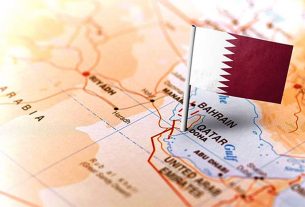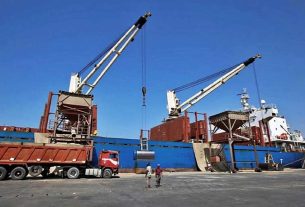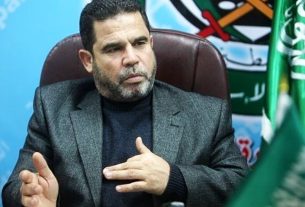Iran focused on reconstruction on its side of the sectarian divide
Russia and Iran’s investments in post-conflict Syria may have a different focus right now, but eventually the two countries may be competing for influence in the war torn country, according to a senior academic.
Russia’s investment in Syria since the civil war started in 2011 has been more focused on projects that generate foreign exchange revenue, such as precious metals and phosphates, while Iranian capital injections have focused more on real estate and agricultural opportunities, according to Steven Heydemann, Janet W Ketcham 1953 Chair and Professor, ME Studies, Smith College.
Speaking to the media at The Future of Syria: Towards Inclusive Peacebuilding event at Chatham House in London, Mr Heydemann said: “From an Iranian perspective, there is less of an interest in actually going head-to-head with Russia and instead trying to expand on the trading opportunities that has derived from its proximity to Syria, and trying to expand the tourism and travel opportunities.”

Iran has been purchasing real estate around Shia shrines and in parts of Syria with significant Alawite populations, while Russia does not have a large footprint in Syria’s real estate market.
“I do think frictions will emerge at some point and tensions between Russia and Iran as they move towards the zones in Syria where the other has occupied the leading role, but at the moment we’re not seeing that much,” Mr Heydemann added. “We’re not seeing the investment in real estate by Russia that Iran is making for example.”
Russia has, however, showed some investment in Syria’s tourism industry, announcing that Moscow-based construction company STG.LOGISITC will rehabilitate the tourist village of Manara in Tartous province.
Sinan Hatathet, Omran Center for Strategic Studies, said: “Both the Russians and the Iranians are well placed to benefit from the next stage of this conflict, but the reality is much more complex.”
“When it comes to rebuilding infrastructure and manufacturing industries – we haven’t seen much interest come from Moscow. Iran doesn’t have much equity to spare in Syria in the first place.”
He said that Iran and Russia adopt “a very opportunistic approach” when it comes to the Syrian economy, and the former is more selective than latter when it comes to directly assisting the Assad regime.
Regime’s control of aid
Another panel at the conference covered the NGO sector in Syria. Haid Haid, consulting research fellow with Chatham House Middle East and North Africa programme, said that the Syrian regime’s hostility to humanitarian charity operations in government controlled areas means Damascus exercises almost total control over aid distribution, often through powerful officially-aligned bodies.
“Most international NGOs are denied access to those areas by the regime through different tactics – for example, if you request a field visit on March 15, you’ll only get a response after that date – and they’ll say they don’t have time to process it.”
The event takes place on March 15, to mark the eight year anniversary of the Syrian Civil War.
Local NGOs in Syria include Syrian Arab Red Crescent (SARC) and the Syrian Trust for Development, which was set up by Asma al-Assad, the wife of Bashar al-Assad, the country’s president.
Haid added that many international NGOs are asked to give money to local organisations, but it presents a problem because the foreign companies cannot assess the demands of the locals and cannot monitor the distribution of aid. Mr Haid said that instead of competing with each other in the region, international NGOs should push principles of being “neutral, impartial and being able to provide aid to all of those who need it” harder so that they have a greater impact on the region.
“Their donors could also provide more leverage – by negotiating with local actors or by holding those INGOs accountable,” he added, before saying that the UK Department for International Development could be doing more to hold the UN accountable for this issue.
Agricultural losses
One sector international NGOs have been supporting in Syria is the agriculture industry, which in 2010 before the war, was connected to 46% of the population’s livelihoods, according to The Food and Agriculture Organisation of the United Nations (FAO). The organisation, which helps support the Syrian farming industry, estimated in April 2017 that the conflict had imposed $16 billion in losses to Syrian agriculture.
“The agricultural sector was reeling from a few problems before the conflict and that was only exacerbated by the conflict and violence in 2011,” said Basma Alloush, advocacy and communications officer at the Norwegian Refugee Council USA, covering the Middle East, west Africa and Afghanistan.
The Syrian farming industry has been historically closely managed by the government, which has used tools such as fuel subsidies to exercise control, she said. Before the droughts of 2006, the government was pushing Syria to be a more self-sufficient producer and not rely on external actors to sustain its population. The state bought almost all the wheat produce and set prices, maintaining a close relationship with the agricultural sector.
The droughts in 2006 caused a huge influx of migration from rural to urban areas ̶ former farmers who did not have transferable job skills.
Ms Alloush said that the civil war “perpetuated the problems that the sector was already experiencing”, whereby equipment and tools for farming became scarce and expensive amid a disruption in supply chain networks. This was compounded by a depletion of water and fuel reserves that posed significant challenges for farmers.
During the civil war, many farms became battlegrounds and farmers found it much harder to make money.
“You’re seeing economic losses from the revenues and profits the sector used to generate. It’s now just becoming a self-sustaining business, to feed your family whenever you can, instead of trying to benefit the overall economy,” Ms Alloush added.
As a result, many Syrians are turning to ad hoc work, such as petty trading or smuggling goods across borders.





